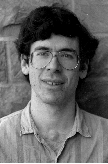Buzzwords of history, revealed by computer scans, indicate new ways of searching the Web
By Bill Steele

DENVER -- In the years after the American Revolution, U.S. presidents were talking about the British a lot, and then about militias, France and Spain. In the mid-19th century, words like "emancipation," "slaves" and "rebellion" popped up in their speeches. In the early 20th century, presidents started using a lot of business-expansion words, soon to be replaced by "depression."
A couple of decades later they spoke of atoms and communism. By the 1990s, buzzwords prevailed.
Jon Kleinberg, a professor of computer science at Cornell University, Ithaca, N.Y., has developed a method for a computer to find the topics that dominate a discussion at a particular time by scanning large collections of documents for sudden, rapid bursts of words. Among other tests of the method, he scanned presidential State of the Union addresses from 1790 to the present and created a list of words that eerily reflects historical trends. The technique, he suggests, could have many "data mining" applications, including searching the Web or studying trends in society as reflected in Web pages.
Kleinberg will emphasize the Web applications of his searching technique in a talk, "Web Structure and the Design of Search Algorithms," at the annual meeting of the American Association for the Advancement of Science (AAAS) in Denver on Feb. 18. He is taking part in a symposium on "Modeling the Internet and the World Wide Web"
Kleinberg says he got the idea of searching over time while trying to deal with his own flood of incoming e-mail. He reasoned that when an important topic comes up for discussion, keywords related to the topic will show a sudden increase in frequency. A search for these words that suddenly appear more often might, he theorized, provide ways to categorize messages.
He devised a search algorithm that looks for "burstiness," measuring not just the number of times words appear, but the rate of increase in those numbers over time. Programs based on his algorithm can scan text that varies with time and flag the most "bursty" words. "The method is motivated by probability models used to analyze the behavior of communication networks, where burstiness occurs in the traffic due to congestion and hot spots," he explains.
In his own e-mail -- largely from other computer scientists -- he quickly found keywords relating to hot topics. In mail from students he found bursts in the word "prelim" shortly before each midterm exam. Later, he tried the same technique on the texts of State of the Union addresses, all of which are available on the Web, from Washington in 1790 through George W. Bush in 2002. From these speeches he produced a long list of words (see attached table) that summarizes American politics from early revolutionary fervor up to the age of the modern speechwriter.
While we already know about these trends in American history, Kleinberg points out, a computer doesn't, and it has found these ideas just by scanning raw text. So such a technique should work just as well on historical records in obscure situations where we have no idea what the important terms or keywords are. It might even be used to screen e-mail "chatter" by terrorists. Sociologists, Kleinberg adds, may find it interesting to look for trends in personal Web logs popularly known as "blogs."
For searching the Web, Kleinberg suggests, such a technique could help zero in on what a searcher wants by recognizing the time context of such material as news stories. For instance, he says, a person searching for the word "sniper" today is likely to be looking for information about the recent attacks around the nation's capital -- but the same search nearly four decades ago might have come from someone interested in the Kennedy assassination.
In his AAAS talk Kleinberg also explores other Web-searching techniques. A few years ago, he suggested that a way to find the most useful Web sites on a particular subject would be to look at the way they are linked to one another. Sites that are "linked to" by many others are probably "authorities." Sites that link to many others are likely to be "hubs." The most authoritative sites on a topic would be the ones that are linked to most often by the most active hubs, he reasoned. A variation on this idea is used by Google, and a more formal version is being used in a new search engine called Teoma http://www.teoma.com .
Kleinberg and others have found that despite its anarchy, there is a great deal of "self-organization" on the Web. In a variation on the "six degrees of separation" idea, Kleinberg says, almost every site on the Web can be reached from almost any other through a series of steps. The structure seems to be a bit like the Milky Way galaxy, with a very dense "core" of heavily interconnected sites surrounded by less dense regions. Nodes outside the core are divided into three categories: "upstream" nodes that link to the core but cannot be reached from it; "downstream" nodes that can be reached from the core but don't link back to it; and isolated "tendrils" that are not linked directly to the core at all.
Within this structure there are many "communities" of sites representing common interests that are extensively linked to one another. So, Kleinberg suggests, searches might be done by following along the link paths from one site to another, as well as just scanning an index of everything.
"Deeper analysis, exposing the structure of communities embedded in the Web, raises the prospect of bringing together individuals with common interests and lowering barriers to communication," Kleinberg concludes.
Media Contact
Get Cornell news delivered right to your inbox.
Subscribe